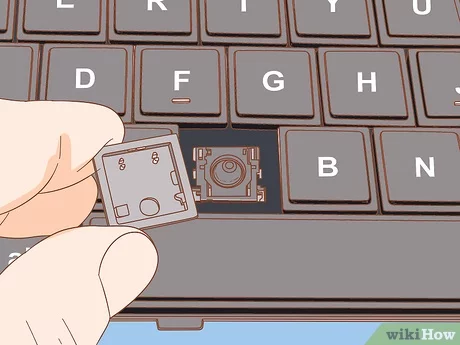Mastering Key Restoration: A Comprehensive Guide on How to Fix a Keyboard Button That Pops Out

Introduction
Keyboards are essential tools for our daily digital interactions, whether for work, communication, or leisure. However, the wear and tear from frequent use can lead to issues, one of the most common being keys that pop out or become dislodged. The frustration of dealing with a malfunctioning keyboard can be alleviated with the right knowledge and approach. In this comprehensive guide, we will explore various methods, from DIY solutions to more advanced techniques, on how to fix a keyboard button that pops out, ensuring a smooth and efficient typing experience.
Understanding Keyboard Mechanisms
Before delving into the solutions, it’s crucial to understand the basic mechanisms behind keyboard keys. Most keyboards use a scissor-switch or membrane switch design, both of which involve a keycap sitting atop a mechanism that provides tactile feedback and registers key presses. When a key pops out, it is often due to a disconnection between the keycap and the underlying mechanism.
DIY Methods for Fixing a Popped-Out Key
1. Reattaching the Keycap:
- Materials Needed: Popped-out keycap, tweezers or small flat-head screwdriver.
- Steps:
- Examine the keycap and locate the metal or plastic hinges on the underside.
- Align the hinges with the corresponding slots on the keyboard mechanism.
- Press down firmly until you hear a click, indicating that the keycap is securely attached.
- Test the key to ensure it registers presses and returns to its normal position.
2. Using a Paperclip or Hairpin:
- Materials Needed: Paperclip or hairpin, popped-out keycap.
- Steps:
- Unbend the paperclip or hairpin to create a straight, thin tool.
- Insert the tool into the space between the keycap and the mechanism.
- Gently apply pressure to guide the keycap back into its place.
- Test the key to ensure proper functioning.
3. Applying Superglue:
- Materials Needed: Superglue, popped-out keycap.
- Steps:
- Apply a small amount of superglue to the connection points on the keycap.
- Align the keycap with the mechanism and press down firmly.
- Hold the key in place for a few minutes to allow the glue to bond.
- Test the key after the glue has fully dried.
Advanced Solutions for Persistent Issues
4. Replacing the Key Switch:
- Materials Needed: Replacement key switch, screwdriver, popped-out keycap.
- Steps:
- Purchase a replacement key switch compatible with your keyboard model.
- Use a screwdriver to carefully remove the key switch cover or surrounding components.
- Remove the popped-out keycap and the malfunctioning key switch.
- Install the new key switch, ensuring it is securely in place.
- Reassemble the keyboard and test the replaced key.
5. Professional Repair Services:
- Method: Expert assessment and repair.
- Description:
- If DIY methods prove unsuccessful or if you’re uncomfortable disassembling your keyboard, consider seeking professional repair services.
- Certified technicians can diagnose the issue, replace components if necessary, and ensure a thorough repair.
Preventive Measures and Maintenance Tips
6. Regular Cleaning:
- Prevention: Dust and debris removal.
- Description:
- Regularly clean your keyboard to prevent the accumulation of dust and debris, which can contribute to key malfunctions.
- Use compressed air or a small brush to remove particles from between the keys.
7. Gentle Typing Habits:
- Prevention: Reducing impact.
- Description:
- Develop gentle typing habits to minimize the force applied to the keys.
- Avoid pounding on the keys, as this can contribute to the dislodgment of keycaps.
8. Using a Keyboard Cover:
- Prevention: Spill and debris protection.
- Description:
- Consider using a keyboard cover to protect against spills and debris.
- A cover provides an additional layer of defense against factors that could contribute to key malfunctions.
Conclusion: Empowering Users to Reclaim Typing Comfort
Dealing with a keyboard button that pops out can be a frustrating experience, but armed with the right knowledge, users can take proactive steps to address and prevent such issues. DIY methods offer accessible solutions for common problems, while more advanced techniques provide options for persistent or complex malfunctions.
Preventive measures and gentle maintenance practices are key to ensuring the longevity and reliability of your keyboard. By incorporating these strategies into your routine, you not only fix the immediate issue but also empower yourself to enjoy a comfortable and efficient typing experience for the long term. Remember, a well-maintained keyboard is a reliable companion, facilitating seamless communication and productivity in the digital realm.




